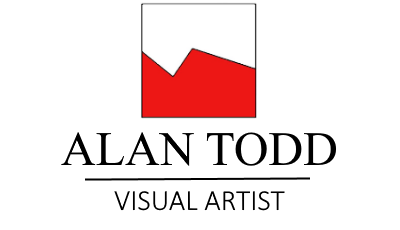For some decades now the art world has been pondering where it is heading, if it is heading anywhere in particular or in indeed if it could ever have a singular face. When the work of artists could be compartmentalised into movements and developmental links made between them, things seemed easier, as artificial as those compartments were in reality. More recent attempts have come through books surveying contemporary art and art entrepreneurs seeking to promote a trend or direction that identifies art designated as investment-worthy. The last such book I read, a veritable tome weighing as much as a small car, looked no further than New York for its inspiration and scanned a diverse population of artists who had taken up residence in the hope of fame and fortune. The word overwhelming described the experience of leafing through the earnest statements of intent through ever-more dense language and hoping to see why the artists had been lumped together. There was no sense of revelation.
The various art fairs around the world make no bones about their intent and the often flashy displays are just as overwhelming in their fecundity. Can the same be said about a Biennale though? Currently a survey of Australian art is showing at the Art Gallery of South Australia. Now in its 18th iteration and curated over time by a variety of worthy gatekeepers of the cultural landscape, Inner Sanctum takes a singular approach. Curator Jose Da Silva said of this exhibition ‘It will be an engagement that doesn’t demand of the viewer. So, this is a show that’s going to be quite personal and intimate and quiet… reminding us about our own humanity’. It is certainly all of that, both literally and figuratively, in joining the rest of the permanent collection in being interspersed through the galleries under a series of themes that perpetuate that feeling of an art mausoleum with its all-pervasive incipient quietness. Visitors speak in couched whispers of reverence unlike in the café area where concentrated life-noise is set against a backdrop of a colourful Adelaide Fringe show and live band filling the grassy inner sanctum with energy.
I couldn’t help but feel that the attempt to direct the art audience down a path to inner contemplative awareness via the work of artists with indigenous cultural backgrounds was just as artificial as attempts to classify diverse art practices into memorable categories. The work was highly personal, even when it was making a cultural/political point and I struggled to relate to much of it. Perhaps I was overthinking it and looking for a composite all-encompassing direction because it doesn’t suggest that it is taking the artistic pulse of a nation or making statements about the state of the world. It simply, is.
The exhibition is divided into five areas The Inland Sea; A Clearing, A Periphery; The River Path; A Quiet Spot; and The Writing of Love and Finding It although with some works in the temporary exhibition spaces and others scattered throughout the Gallery and embedded within the collection, I missed works. I’d seen the work of Claire Adolphs before and the familiarity of her images left an impression in that her work occupied the corridor between the lower galleries. It, like much of the rest of the work on display, had an ethereal quality of separation from reality. There was no sense of immediacy but more of a veil between two worlds. Lillian O’Neil’s photographic collages of the struggles of motherhood were startling and I was reminded in some ways of Hannah Hoch from a century ago in the use of truncated human forms from magazines although O’Neils have been much enlarged, in that they both distanced themselves from the audience. I had the same feeling with George Cooley’s, ‘My Painted Country 1’. It spoke of a place I have no connection with and while I admired the quality of paint, I could relate to the landscape on only a superficial level and it was perhaps the scale of the work more than the work itself that remained in my memory.
The only question in my mind was whether I had learned anything as I exited via the book/giftshop with my commemorative book. Leafing through the book over coffee in the gallery cafeteria was just as much a foreign experience as traversing the galleries looking for connections and a day later upon a second reading, the feeling of alienation hadn’t abated. There was noisy life in the garden beyond and throughout the city with the Fringe well underway that was in complete contrast to the exhibition. Da Silva had certainly achieved his goal of ‘an engagement that doesn’t demand of the viewer’ but in my mind the sense of remove from the reality of life on the streets during festival time, pushed the Biennale into obscure territory where its relevance was called into question. Mind you I’ve heard that same criticism levelled against all previous incarnations over eighteen years, so it is in itself a worthless summation.
So, what do we expect of a Biennale of Australian Art? A singular vision? A suggestion of forward momentum? A bringing together? All of the above and none of the above. It seems obvious to say that we artists are all on our own. On a personal level I was no closer to figuring out my place in the artistic world than when I entered the gallery. If anything, an exhibition such as this reinforced my sense of isolation.
